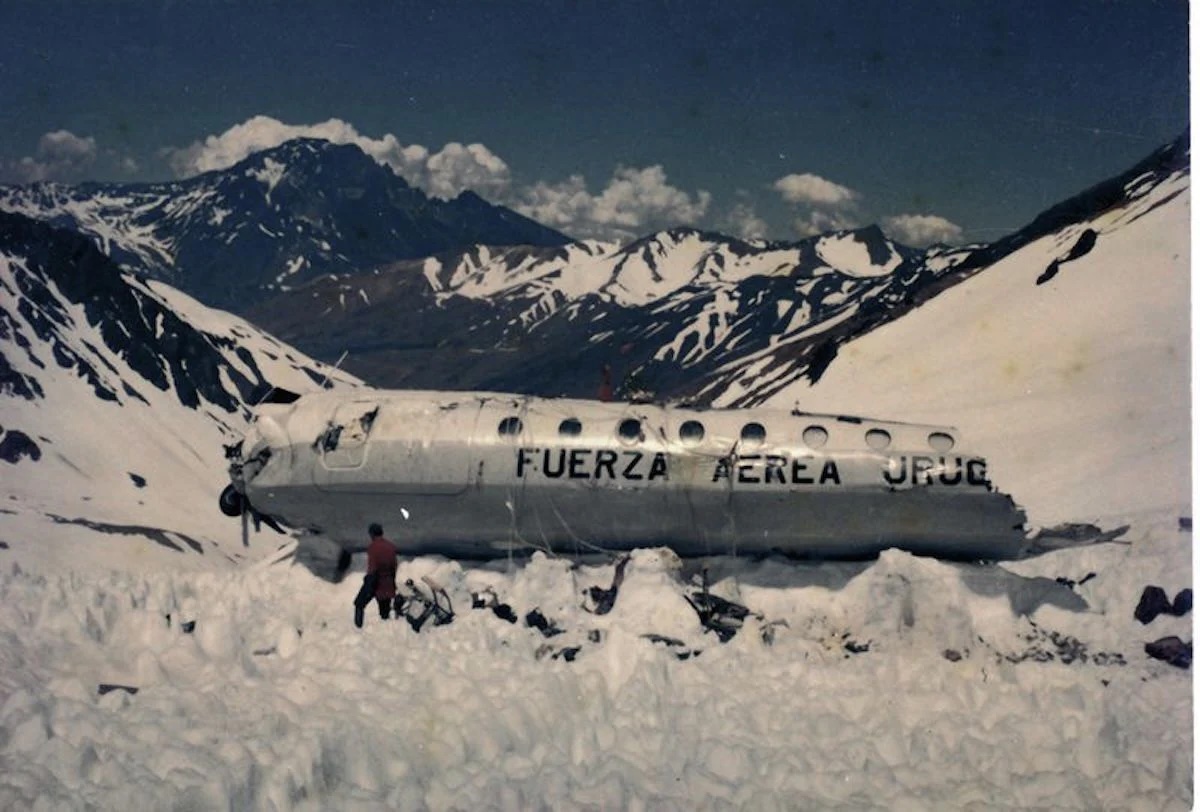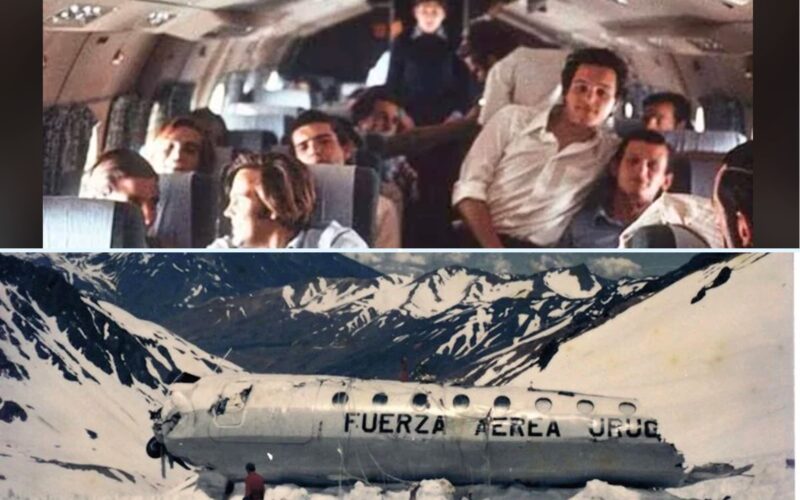The tragic story of the 1972 Uruguayan Air Force chartered flight that crash-landed in the Andes is one of the most widely-known aviation incidents in modern history.
Through the years, the incident has become known as “The Andes flight disaster” or “The miracle of the Andes” due to the remarkable story of human survival.
In 1993, Paramount Pictures released a drama film directed by Frank Marshall based on the tragedy called ‘Alive’. The movie starred Ethan Hawke and was narrated by John Malkovich.
The most recent portrayal of the tragedy made its way to Netflix in 2023, 30 years after ‘Alive’ hit the big screen.
The latest adaptation has garnered much praise, with many reviews claiming that it depicted the incident more accurately, given that photography and filming was shot in Sierra Nevada, Spain; Montevideo, Uruguay; Chile and Argentina, and included the actual crash site in the Andes.

The cast was also composed of Spanish-speaking actors, giving the film a more authentic feel than its Hollywood counterpart.
Since ‘Society of the Snow’ was released on Netflix on January 4, 2024, the internet has been rife with articles revisiting the incident, in particular how the survivors managed to stay alive for more than two months. Their story of survival is harrowing and remarkable to say the least.
But as aviation enthusiasts, we have a number of questions about the incident. What really caused the plane to crash? Was it due to bad weather or pilot error? And why did the rescue take so long?
AeroTime takes a closer look at the incident and provides those answers and more.
What aircraft was used?
The aircraft was a four-year old Uruguayan Air Force Fairchild FH-227D (a version of the Fokker F27 Friendship).
It featured a 1.83 m (six ft) stretch over standard-length F27/F-27s, taking the standard 32 seating to 56, with a larger cargo area between the cockpit and the passenger cabin.
The FH-227 was powered by 1678kW Rolls-Royce Dart RDa.7 Mk 532-7 turboprop engines.
A total of 78 FH-227 aircraft were built, 23 of which ended up involved in a crash The Andes flight disaster was the 10th FH-227 crash in 42 years.
The last incident took place in January 2002 when a FH-227E belonging to the aviation unit of Petroproducción, a subsidiary of the Ecuadorian state-owned Petroecuador oil company flew off-course and into the 4,500 meter-high Cerro El Tigre mountain, killing all 21 passengers and five crew members.
And while the Andes disaster can be considered the most high-profile among the crashes, it was not the worst.
On June 12, 1982, a twin-engined Fairchild FH-227B (registered in Brazil as PT-LBV) operated by the now-defunct airline TABA (Transportes Aéreos Regionais da Bacia Amazônica), crashed into a car park, killing everyone on board.
The plane was conducting a flight between Eirunepé Airport (ERN) and Tabatinga International Airport (TBT) when it struck a lighting tower on approach to Tabatinga. The plane crashed into the car park and exploded, killing all 44 on board. The incident was not only the worst aviation disaster in TABA’s history, but the most fatal to involve a Fairchild FH-227.
Timeline and path of flight 571
Flight 571 was a chartered flight carrying members of the Old Christians Club rugby team, along with some of their friends and family, from Montevideo Airport (MVD) to Santiago Airport (SCL) in Chile. In total, 45 people were on board the plane.
The aircraft departed Montevideo Airport on October 12, 1972. However, a storm front over the Andes forced them to stop overnight in Mendoza, Argentina.
The FH-227 was not built to fly higher than approximately 22,500 feet (6,900 meters), so the pilots plotted a course south to the Pass of Planchón, where the aircraft could safely clear the Andes.
The following day, the flight took off from Mendoza Airport (MDZ) at 14:18 local time.
The plane flew south from Mendoza towards Malargüe radio beacon at FL180. The flight radioed Malargüe Airport (LGS) with their position and told the airport that they would reach the Planchón Pass at 15:21 local time.
The intention was to fly a U-shaped path, first across the pass to the Curicó radio beacon and to head north, and then descend towards Santiago.
However, due to a navigational error, the flight crew mistakenly believed that they had already reached Curicó and began to descend. The flight’s actual location was still about 80 kilometers east of Curico, in the mountainous Planchon Pass.
This was the fatal error that ultimately led to the FH-227 plummeting into the Andes.

Why did flight 571 crash?
One of the most prominent questions, and one all aviation enthusiasts are likely to want to know the answer to, is this: could the crash have been prevented?
Unfortunately, the answer is yes.
While bad weather was a contributing factor, investigations concluded that pilot error led to the crash.
41-year old Dante Héctor Lagurara was a lieutenant colonel in the Uruguayan Air Force, and was co-pilot of the Fairchild 571 aircraft. He was in control of the aircraft at the time of the accident.
Lagurara failed to see that the instrument readings showed the aircraft was still about 70 kilometers east of Curico. Thinking they had already reached Curico, Lagurara radioed air traffic control, which gave him permission to descend from 18,000 to 11,500 ft.
During the descent, Lagurara regained visual flight conditions and caught sight of the aircraft’s close proximity to the mountains. Despite frantic attempts to gain altitude, it was too late and the FH-227 struck a mountain ridge, shearing off both wings and the tail cone. What remained of the fuselage slid down a glacier at an estimated 350 km/h (220 mph), descending 725 meters (2,379 ft) before ramming into an ice and snow on a glacier.
According to Sociedad dela Nieve, a website dedicated to the plight of all onboard flight 571, Lagurara did not initially die on impact. He was badly injured and trapped in the wreck of the cockpit. The pilot, Colonel Julio César Ferradas, died upon impact.
Lagurara told the survivors, who had been trying to get him out of the wreckage, to find his pistol and shoot him. But the request was denied.
Before he died from his injuries on October 14, 1972, Lagurara told the survivors that they had already passed Curico, information that we now know is incorrect. The information caused confusion among the survivors when they were planning which way to trek for help.
Why did the rescue of flight 571 take so long?
The 16 survivors were rescued on December 22, 1972. They managed to stay alive in harsh conditions for 72 days. While that was indeed remarkable, it does beg the question of why it took so long for them to be rescued.
Extreme weather conditions and the erroneous report of its location made it extremely difficult to locate the aircraft. That year, the Andes had a record for snowfall, the most it had in decades.
After losing contact with the FH-227 on October 13, 1972, Pudahuel airport immediately notified the Air Rescue Service stationed at the other airport in Santiago: Los Cerrillos (ULC).
The Chilean Air Rescue Service began its search from the last reported position given by the flight’s co-pilot: the Curicó corridor to Angostura and Santiago. The team initially searched in sparse and less populated regions, thinking that if the plane was somewhere in a town or city, news of its crash would have broken out.
After a thorough analysis of all available information, the search team concluded that the plane was not in the reported position when the flight team last contacted the control tower.
Aware of the co-pilot’s miscalculation, the search team collated a list of all the possible areas where the plane could be.
Another challenge that hindered the rescue was that the aircraft’s roof was painted white, making it almost impossible to locate from a distance.
According to Sociedad de la Nieve, the international rescue standard during the time was to search for a plane crash for 10 days. There were a couple of days (October 17 and 18) where the search had to be suspended due to extreme weather conditions which made it impossible to fly over the mountain range.
As days went by without any leads or signs of the missing aircraft, hope of finding the survivors gradually diminished. The search team concluded that if there were survivors from the crash, they would likely perish due to the harsh weather conditions and environment.

On October 21, 1972, the search team announced that it was officially ending its initial search and rescue efforts to locate flight 571 due to the complexity of the operation and extreme weather. The plan was to resume the search in January 1973, this time to search for remains of the passengers.
According to the History Channel, the survivors were aware of this. The group found a transistor radio that fortunately worked. They listened intently as Chilean news announced that the search had officially ended.
The History Channel reported that the following conversation took place among the survivors:
“Hey boys!” one of them shouted to the rest of the survivors. “There’s good news. They’ve called off the search.”
“Why the hell is that good news?” yelled one in response.
“Because it means we’re going to get out of here on our own.”
Realizing that survival rested in their own hands, the survivors set off on arduous treks to seek help. It was on the third expedition that they found success.
A total of 16 people survived out of the 45 that were onboard the flight.
A museum dedicated to the crash, Museo Andes 1972, is located in The Old City in Montevideo, Uruguay.
Relics and pieces from the wreckage such as letters, pieces of the fuselage, photographs and memorabilia can be found in the museum.

